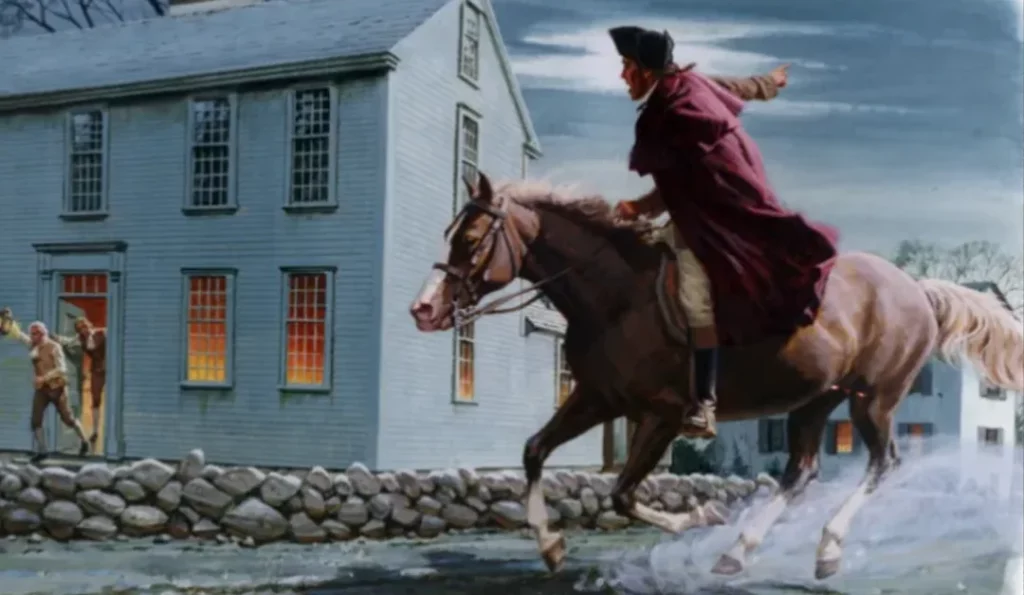Right from an early age, the myth of the midnight rider was one of the foremost and most talked about in history. However, could it be linked to the personality of Samuel Prescott, or was the myth just so fascinating to the readers?
The clear truth is Samuel Prescott is not a famous historical figure compared to the first two midnight riders, Paul Revere and William Dawes.
Though Prescott was more known to be the only individual who completed the race, it can be said that Paul Revere did take the limelight of the midnight ride tales since he started the midnight ride. However, Samuel Prescott did make a name in historical records.

Who was Samuel Prescott?
There is little information about the early life of Samuel Prescott, apart from his outstanding involvement in the midnight ride. However, Samuel Prescott was born in Concord on the 19th of August,1751.
He lived with his family in Massachusetts, British America, where a handful of his earlier generations had lived for many years. He was an American Physician who decided to follow the line of the career of his grandfather and father, who were well-vast in the medical profession.
Samuel Prescott lived an ordinary life as a physician before the outbreak of the American revolution. The event of the midnight ride, which took place from April 18th to 19th, 1775, brought Samuel Prescott together with Paul Revere and William Dawes, the earlier midnight riders. He came to be known as the third-midnight rider in history.
Prescott and the Midnight Ride!
On the night of April 18, 1775, Prescott could be said to be enjoying a typical life an average twenty-four years old young man could have back then. Historical facts state that Prescott visited a young lady called Lydia Mullikenwas at Lexington, Massachusetts, a city about six miles east of Concord.
Though the purpose of his visit is not confirmed in writings, Samuel Prescott experienced a change in the dark hours of April 18 and the early mornings of April 19 between his journey from Lexington to Concord.
Unknowing to Prescott, the two earlier midnight riders, Paul Revere and William Dawes had been sent by Joseph Warren to alert and warn Samuel Adams and John Hancock.
These were profound members of the continental congress and a signer of the declaration of independence, respectively, about the planning of the British expedition to capture and arrest them.
Upon receiving the information from Paul Revere and William Dawes, the two officials sent the two riders to deliver the information to the people in Concord and let the town know of the British plans to destroy and confiscate weapons and ammunition hidden by the Massachusetts military.

Thus, allowing the people in Concord to be prepared and secure the hidden military weapons. On their way to Concord, Paul Revere and William Dawes rode under the midnight moon when the gentleman (Samuel Prescott) rode past the two messengers.
Immediately, Revere seemed to recognize the young man and referred to him as “High son of Liberty.” Though the precise reason behind the utterance is not fully known.
However, it may be linked to Prescott being a member of the Sons of the Liberty (a secret group that opposed the policy of the British Colonial before the American Revolution) or due to the sympathetic vibe offered by Prescott.
To keep the conservation going, Revere enlightened Prescott on the possibility of meeting a British Patrol along their way to Concord and informed him about the urgent message that needed to be delivered to the people in Concord.
Fortunately, Prescott willingly volunteered to accompany the two riders in delivering the message to the people. Prescott suggested that it would be an easy task if he followed along since the people of Concord are more familiar with him, and the message would sound more urgent, meaningful, and valid if it came from him rather than strangers.
The Volunteering spirit of Prescott and the willingness to accompany both riders through their midnight ride, despite British patrols and spies everywhere, must have impressed Revere and Dawes. Time passed as the three riders rode under the midnight moon, alerting the neighboring houses as they journeyed to Concord.
Unfortunately, their journey was disrupted by a British patrol, which ended up arresting Revere, leaving Prescott and Dawes to escape. However, Dawes fell from his horse, leaving only Prescott responsible for taking the message to Concord. Against all odds, Prescott rode, alerting residents and houses of the incoming danger.
He arrived at Concord at about 1:30 am and informed the Sentry, who ranged the bell that notified the whole town. In light of the ride and the entire escapade, Prescott was the only rider that arrived at Concord, despite not being the original rider on the assignment.
Hence, as a result of him, not only was Concord notified, other towns nearby were able to march down to Concord early enough to engage the British Army at the Old North Bridge and other areas along the way to Boston.
Prescott’s Fame from the Midnight Ride
As an ordinary young man living his life, Prescott couldn’t have imagined his life course and that fame would come from an unexpected encounter.
However, Prescott, Revere, and Dawes are important figures in the history of the United States since they played a vital role in the outcome of the events that followed. Due to Prescott’s efforts to reach Concord at midnight, myriads of Militia were able to gather on April 19 in opposition to the British at the Battle of Concord and the Battle of Lexington.
Without his willingness to join Revere and Dawes in fulfilling their tasks that night, the people of Concord and nearby would have been caught unawares by the British expedition, and the story wouldn’t have ended on the bright note it did. In celebration of his excellent entry to Concord, the scene is reenacted every year at midnight on April 19.

